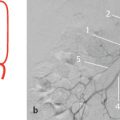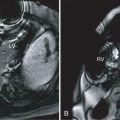Healthcare cybersecurity isn’t keeping pace with digital transformation. While you might check a bitcoin price tracker for investment decisions, the blockchain technology underlying cryptocurrencies offers something more valuable for radiology: practical solutions to real problems we face daily.
We’re examining how distributed ledger technology addresses genuine pain points: patient privacy concerns, multi-institutional research collaboration, credentialing inefficiencies, and AI integration challenges. The applications we’ll explore aren’t hypothetical – they’re being implemented and tested in real healthcare environments today.
What Blockchain Actually Does for Medical Imaging
Over 176 million medical data records were compromised between 2009 and 2017 alone. Yet blockchain technology isn’t another speculative venture. The American Journal of Roentgenology published guidance in January 2025 stating that “radiologists should stay informed of BCT given its ongoing improvements and unique potential to support the specialty’s needs.” This represents a significant shift from theoretical interest to practical recognition within mainstream radiology publications.
Think of blockchain as a distributed database that tracks every action taken with your imaging data. Unlike traditional PACS systems that rely on centralized storage, blockchain creates an unchangeable record of who accessed what, when, and why. Each transaction gets cryptographically signed and distributed across multiple locations.
Here’s where it gets interesting for daily practice. Instead of patients requesting DVDs or waiting for hospital IT departments to transfer studies, they become nodes in their own healthcare network. A framework developed in 2018 demonstrated how patients can grant electronic access to their medical imaging data while maintaining complete control over permissions. You’re not just storing images differently – you’re fundamentally changing who controls access to them.
The European Society of Radiology recognized this shift in their comprehensive analysis, noting that blockchain technology has “many potential applications in medical imaging, typically making use of the tracking of radiological or clinical data.” This isn’t about replacing existing infrastructure overnight. Rather, it’s about extending current capabilities to address limitations we’ve accepted as unavoidable.
Solving Radiology’s Cybersecurity Puzzle
Medical imaging faces unprecedented security challenges. Cybercriminals increasingly target healthcare because patient data commands premium prices on dark markets. Traditional security measures often create friction between protection and accessibility – a balance that frequently tips toward convenience at the expense of security.
Blockchain approaches this differently through cryptographic hashing that identifies imaging files without storing complete image data on the distributed ledger. This creates what researchers call “radiological cybersecurity” – the ability to detect unauthorized alterations that could fool AI systems or compromise diagnostic accuracy. When someone attempts to modify an imaging study, the hash comparison immediately reveals the tampering attempt.
The technology proves particularly valuable for detecting malicious modifications designed to exploit artificial intelligence algorithms. As AI applications become more prevalent in radiology, ensuring the authenticity of input data becomes critical. A single altered pixel could potentially cause an AI system to miss a diagnosis or flag false positives.
Estonia provides a compelling real-world example. Their national identification system assigns each citizen a unique public key for signing documents electronically – including healthcare records. This implementation has gained widespread public acceptance over the past decade, demonstrating that complex cryptographic systems can achieve mainstream adoption when properly designed.
Streamlining the Credential Chase
Radiologists know the credentialing process well – it’s bureaucratic, time-consuming, and frustratingly repetitive. Each new hospital or practice requires verification of the same educational credentials, board certifications, CME records, and malpractice history. The process can take months, during which qualified radiologists sit idle while administrators shuffle paperwork.
Blockchain-based credentialing transforms this dynamic by creating verified, shareable professional profiles. Rather than submitting the same documentation repeatedly, you’d grant healthcare institutions temporary access to specific credential categories. Your medical school transcripts, residency completion, board scores, and continuing education records exist as verified entries on a distributed ledger that institutions can trust without independent verification.
- Dynamic Consenting: Patients can modify research permissions in real-time without paper forms
- Multi-institutional Collaboration: Secure data sharing across research networks while maintaining privacy
- Supply Chain Tracking: Equipment maintenance records and contrast agent authenticity verification
- Professional Mobility: Instant credential verification when working at multiple institutions
The practical benefits extend to research collaboration. Currently, multi-institutional studies require complex data use agreements, privacy reviews, and technical integration challenges. Blockchain enables secure data sharing where patients control exactly which studies can be included in research projects. They can withdraw consent instantly without requiring researchers to manually remove their data from active studies.
Supply chain management represents another practical application. Tracking contrast agents from manufacturer to patient injection creates comprehensive audit trails for quality assurance and regulatory compliance. When equipment maintenance gets recorded on blockchain, regulatory compliance becomes more straightforward because the maintenance history can’t be altered retroactively.
Where Blockchain Is Heading in Radiology
The blockchain-based electronic health record market reached $1.38 billion in 2025 and projects growth to $14.85 billion by 2034 – representing a 30.2% compound annual growth rate. These numbers reflect serious institutional investment rather than speculative enthusiasm.
However, successful implementations focus on specific use cases rather than wholesale system replacements. Healthcare institutions evaluate blockchain technology based on whether it solves particular problems more effectively than existing solutions. The technology works best for applications requiring immutable audit trails, multi-party trust, and decentralized control.
The recent recommendations from the American Journal of Roentgenology indicates an increasing realization of the shift from experimentation to practical application of blockchain technologies. Radiologists with an understanding of the fundamentals will be in a better position to participate meaningfully in deciding on an adoption versus simply responding to a vendor demonstration or direction presented by an administrator.
The Practical Path Forward
Blockchain technologies will offer legitimate value added for certain radiology applications, with the clearest examples being situations involving multiple stakeholders, data provenance requirements or patient controlled access situations. To achieve value, you should tackle specific pain points, rather than simply adopting technology simply because it is new.
The evidence suggests there is benefit for radiologists to become acquainted with the fundamental concepts of blockchain, so they can engage in discussions as evolving blockchain regulations also evolve. With a foundational understanding of blockchain technologies, radiologists will be able to make more informed decisions when considering whether to adopt blockchain technologies as it relates to our practice of radiology over the next decade. The real question we should be asking ourselves is not whether blockchain will affect radiology, but how do we choose to engage with this technology?
Stay updated, free articles. Join our Telegram channel

Full access? Get Clinical Tree








